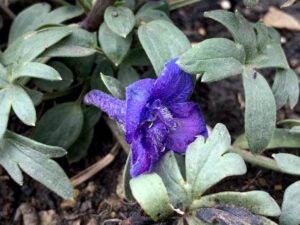OBJECTIVE 2. Conserve alpine plants and their habitats >
TARGET 7:
Conserve 60% of threatened alpine plant species in North America in-situ by 2030.
Sixty percent of threatened alpine species, defined as those with a G1-G3 rank, will be conserved in areas identified as protected by IUCN protection designations. Botanic gardens will commit to preventing alpine plant species extinction and habitat loss through in-situ conservation activities. Botanic garden staff will endeavor to work collaboratively with land agencies to provide technical skills and botanical information.
Progress
Currently underway!
Approach
This target is similar to the previous one: conserving alpine plants within their habitats, except with an emphasis on our threatened alpine plant species. Threatened in this case means their Global Status Rank is G1: Critically Imperiled — At very high risk of extinction or elimination due to very restricted range, very few populations or occurrences, very steep declines, very severe threats, or other factors; G2: Imperiled — At high risk of extinction or elimination due to restricted range, few populations or occurrences, steep declines, severe threats, or other factors; and G3: Vulnerable — At moderate risk of extinction or elimination due to a fairly restricted range, relatively few populations or occurrences, recent and widespread declines, threats, or other factors. These Global Status Ranks are assigned by NatureServe, a conservation-focused non-profit. Aobve is an example of one of these threatened alpine plants: Alpine Larkspur (Delphinium alpestre), ranked G2.

